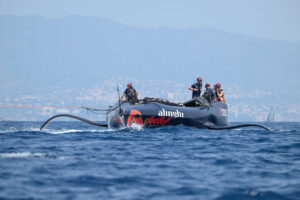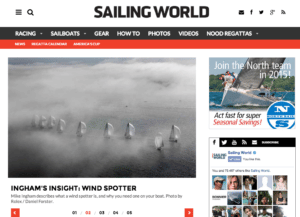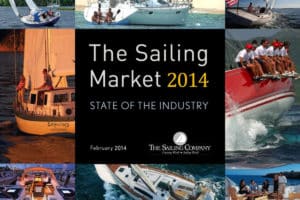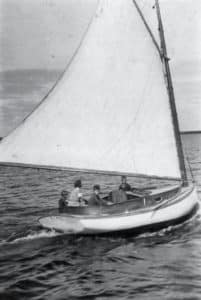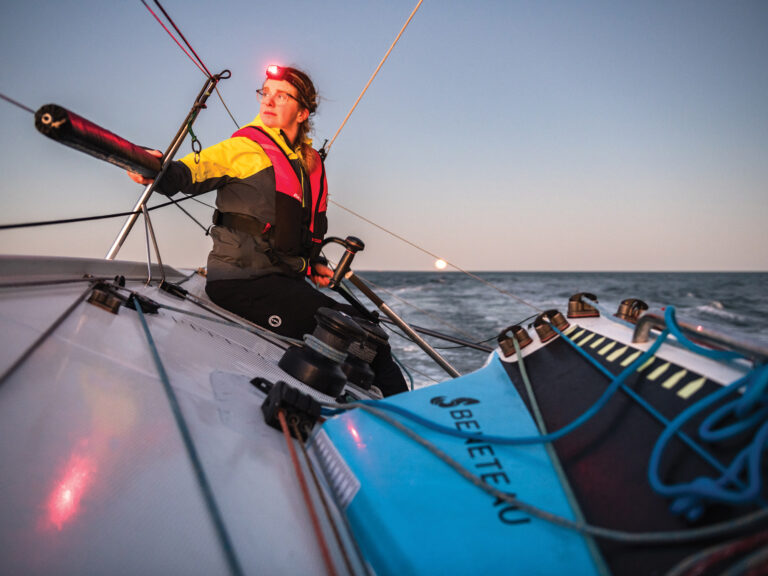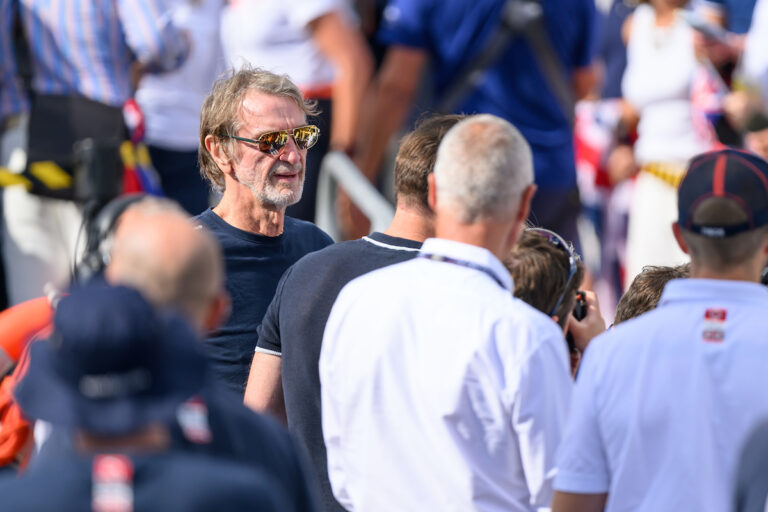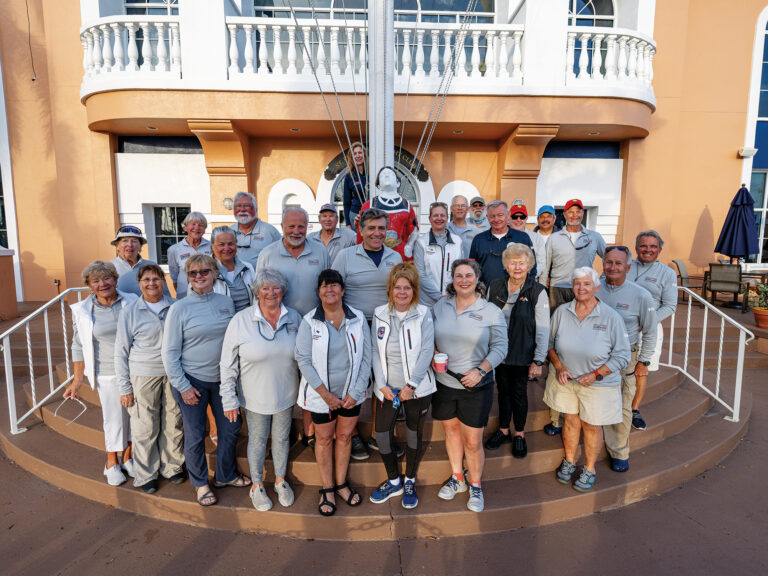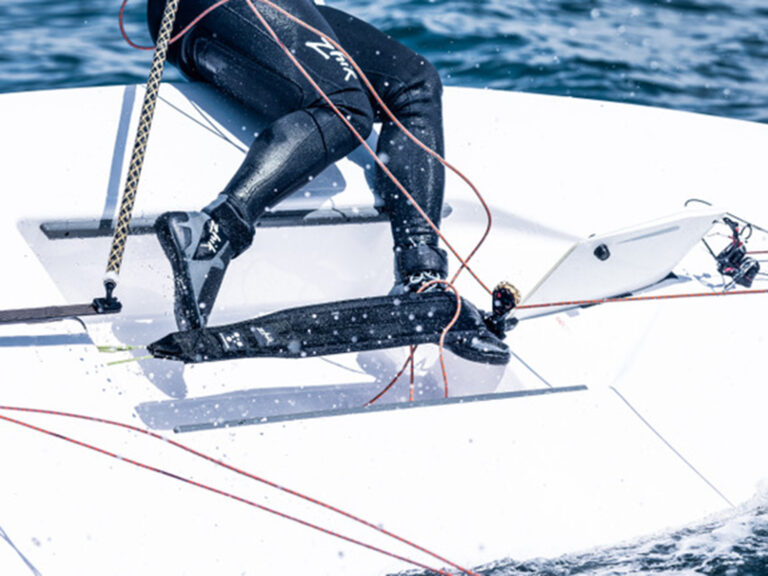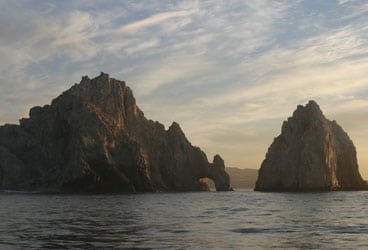
HWSWApril368
Earlier this month, on April Fools Day, I had the distinct pleasure of sailing into Cabo San Lucas, Mexico, after a remarkably fast and incredibly enjoyable 800-mile ocean race from Newport Beach, California. I was sailing with skipper Glenn Highland and yacht designer Alan Andrews aboard the brand-new Andrews 39 Bien Roulee for a feature article to run in the June issue of Sailing World. The Corona del Mar (CDM)-Cabo Race was my first race south of the border, and it was a memorable one.
It also gave me a goal to shoot for. All I need is 59 more Mexican races, and I’ll have sailed as many as the dean of Southern California navigators, the Curmudgeon, Tom Leweck.
The “Curmudgeon,” of course, is the handle by which Leweck is known to the vast readership of Scuttlebutt, the daily sailing newsletter he launched in the late 1990s. And, yes, the CDM-Cabo Race was his sixtieth Mexico race, which he knocked off in fine fettle by navigating the Swan 53 Katrina to a second-place finish in PHRF-C.
“There were many years in a row where I didn’t miss any,” he said of his Mexican milestone. “But there are a couple of kids out there who’ll fly by me one day. Hey, I’m 77 and I’m not sure how many I have left in me. Maybe none! But if that’s the case, this wasn’t a bad one to go out on.”
Leweck looks a good ten years younger–at least–than the age he professes to be, and I’d say the odds are quite good that he’ll hit Roger Maris’s famous number, 61, in the not-distant future. But he’s certainly right in noting that this edition of the Cabo race was special.
“There might have been similar races,” said Leweck, who launched his string of sixty in 1971, “but it’s hard for me to believe there’s ever been a better race in terms of consistent winds. Manageable winds. I don’t know that we ever saw 30-knots of breeze on our boat. We did see a lot of mid-20s. But in terms of breeze, there’s never been a better one than this.”
Indeed, the conditions made for a new course record, set by Doug Baker’s Magnitude 80, with an elapsed time of 2d, 10h, 23m, 27s.
These days, Leweck says, “any bozo” can pull up the recorded tracks of previous races on the Internet and have a fairly good chance of finding success in a Mexican contest. But it used to be a different story. “Years ago I had a huge advantage,” he said. “I was writing up all these races for a local magazine called Santana that gave me entree to the nav stations of all the winning boats and a real opportunity to talk to all the skippers. I looked at all the charts and knew where the good guys went. After awhile, I knew where the yellow-brick road was, the fast track down the coast.”
Of course, it wasn’t long before Leweck himself was one of the “good guys,” and would-be waterborne conquistadors started following his tracks south. He still has a few rules of thumb for the run to Mexico from Southern Cal.
“First off, you have to get away as quickly as possible from the coastal influences of Newport Beach, which is a light-air area in the best of conditions,” he said. Then, once latched into the usual northwesterly breeze past the Channel Islands, he sets his first significant waypoint, off Pt. Eugenia, just above Turtle Bay past Cedros Island.
“That waypoint-20, 22, 25 miles off Pt. Eugenia, is a safe spot to aim for when you’re going down the coast,” he said. “I draw a green line connecting all my waypoints on the chart, and I want to be outside that green line. There’s no problem if the crew wants to go inside there, just wake me up and explain to me why you’re doing it. I know there’s good breeze outside.”
Standing off remains the strategy working down the coast. “If for any reason we get within 25 miles of the shore, I pucker,” he said. “I would almost make a jibe to right angles of the course to get back in the prevailing northwesterly. You don’t want to do anything stupid, you don’t do a negative VMG to get out there, but you generally find lighter air (towards the beach).”
The next significant waypoint is off Cabo Lazaro, north of Bahia Magdalena, again some 23 miles offshore. “It’s something you aim for when you’re 150 miles out,” he said. But he noted that it’s also “time-of-day” sensitive. “You don’t need to go out there if it’s afternoon and you’ve got 20 knots of breeze. Then you’re thinking, ‘I need to get down to Cabo San Lucas.’ In fact, this time I think I was twelve miles off the point and we had 20 knots. Didn’t trouble me.
“But if we’d been there at 6 a.m., inside of 20 miles off the beach, I’d castrate the SOB that did that to me.”
Note to self, should I sail with Leweck: Stay off beach. Off. Beach.
There are two final potential pitfalls before crossing the finish line off Cabo. The first is about midway between Cabo Lazaro and the tip of Baja California, when the urge to jibe for home is tempting. Leweck calls it the “Too-Soon Lagoon.” The last is Cabo Falso itself, the last point of land on the peninsula. “I would love to know how to get around Cabo Falso smoothly,” he said. “Haven’t got a clue.”
If anything, Leweck says the 2008 Cabo Race was perhaps a tad too windy, for it put the hefty Swan at somewhat of a disadvantage to some of the fleet’s lighter, faster yachts.
“Katrina don’t surf,” he said. “But give me a steady 14 knots of breeze all day, and I’ll make you miserable.”
He may be a Curmudgeon, but I don’t doubt it for a minute.

